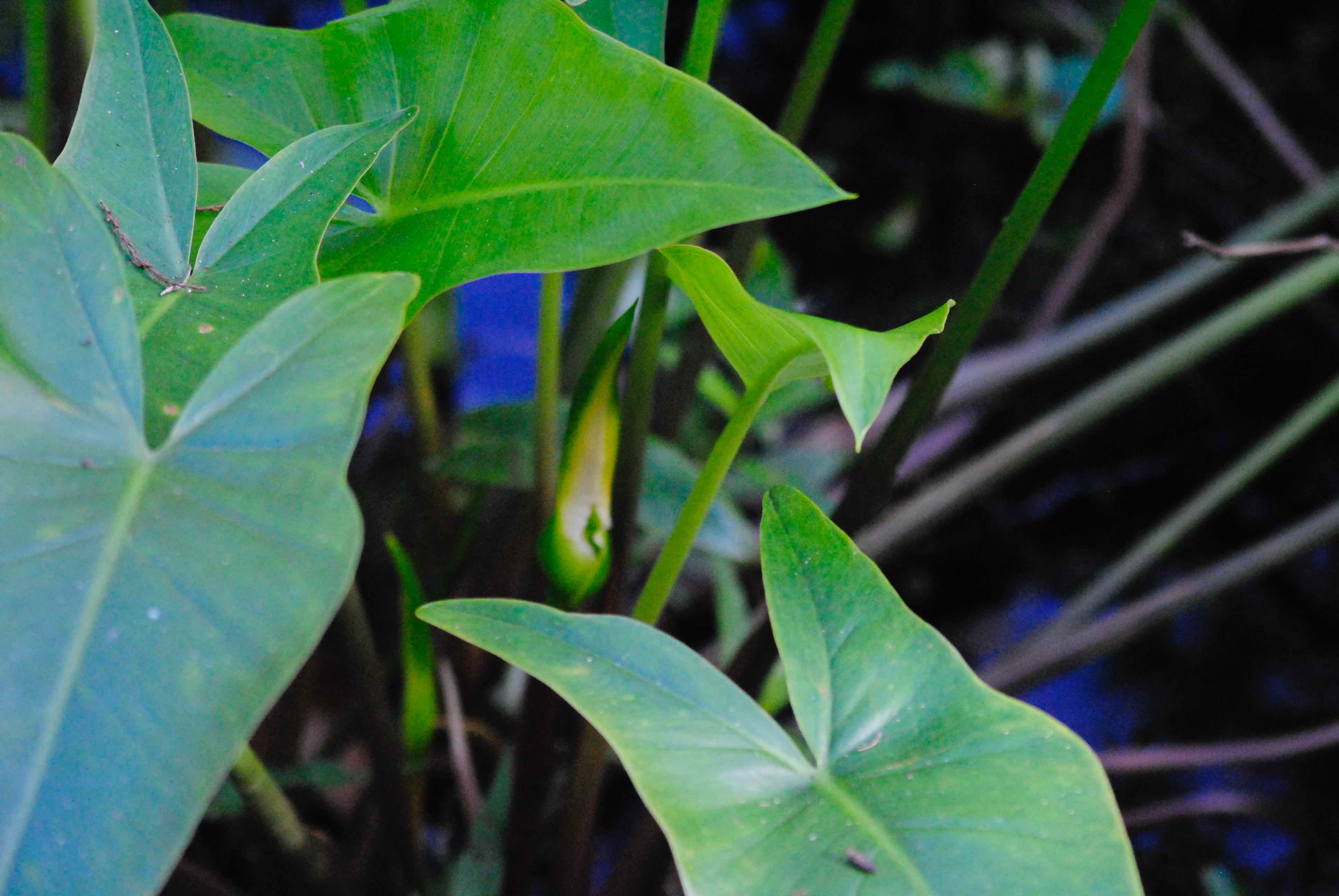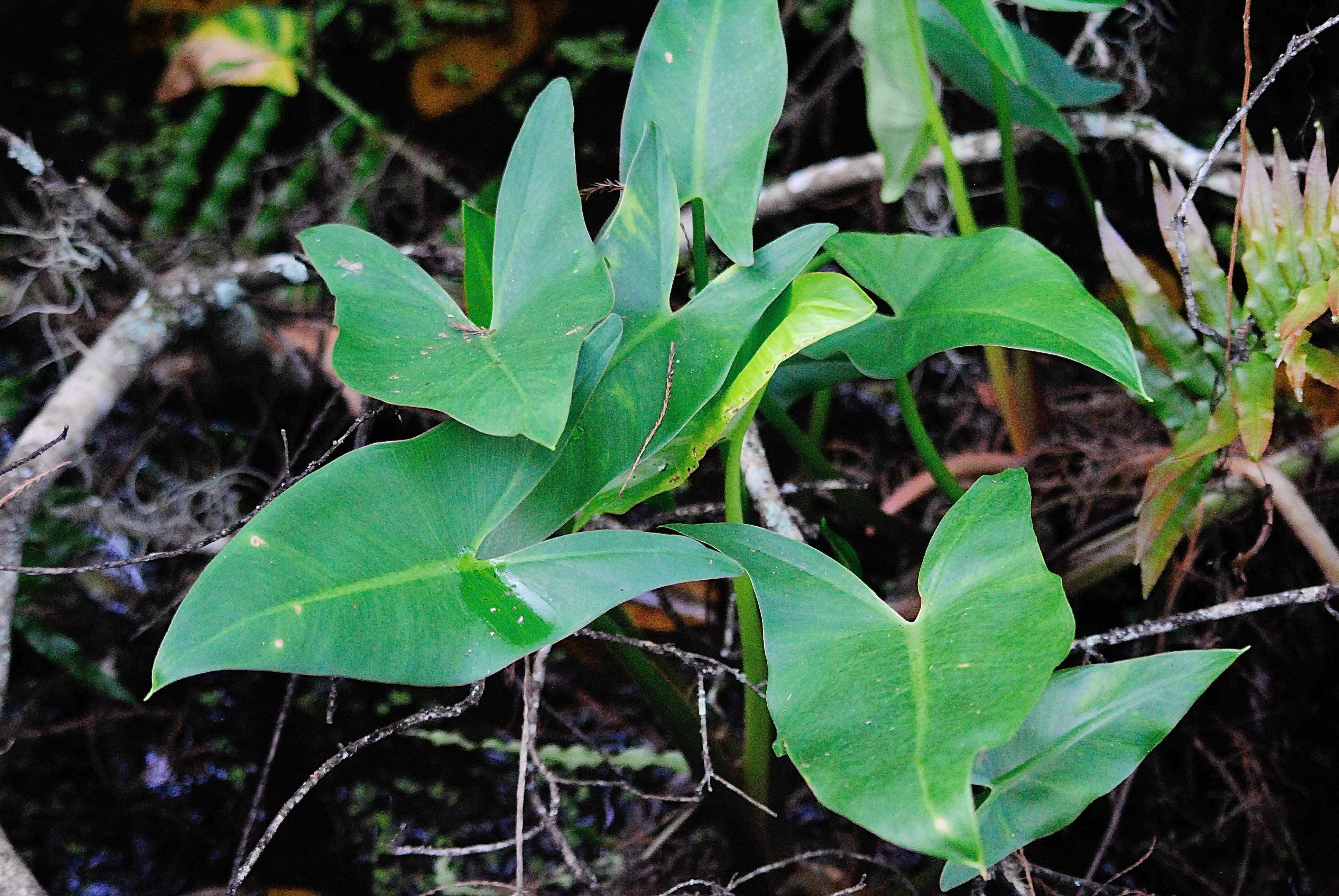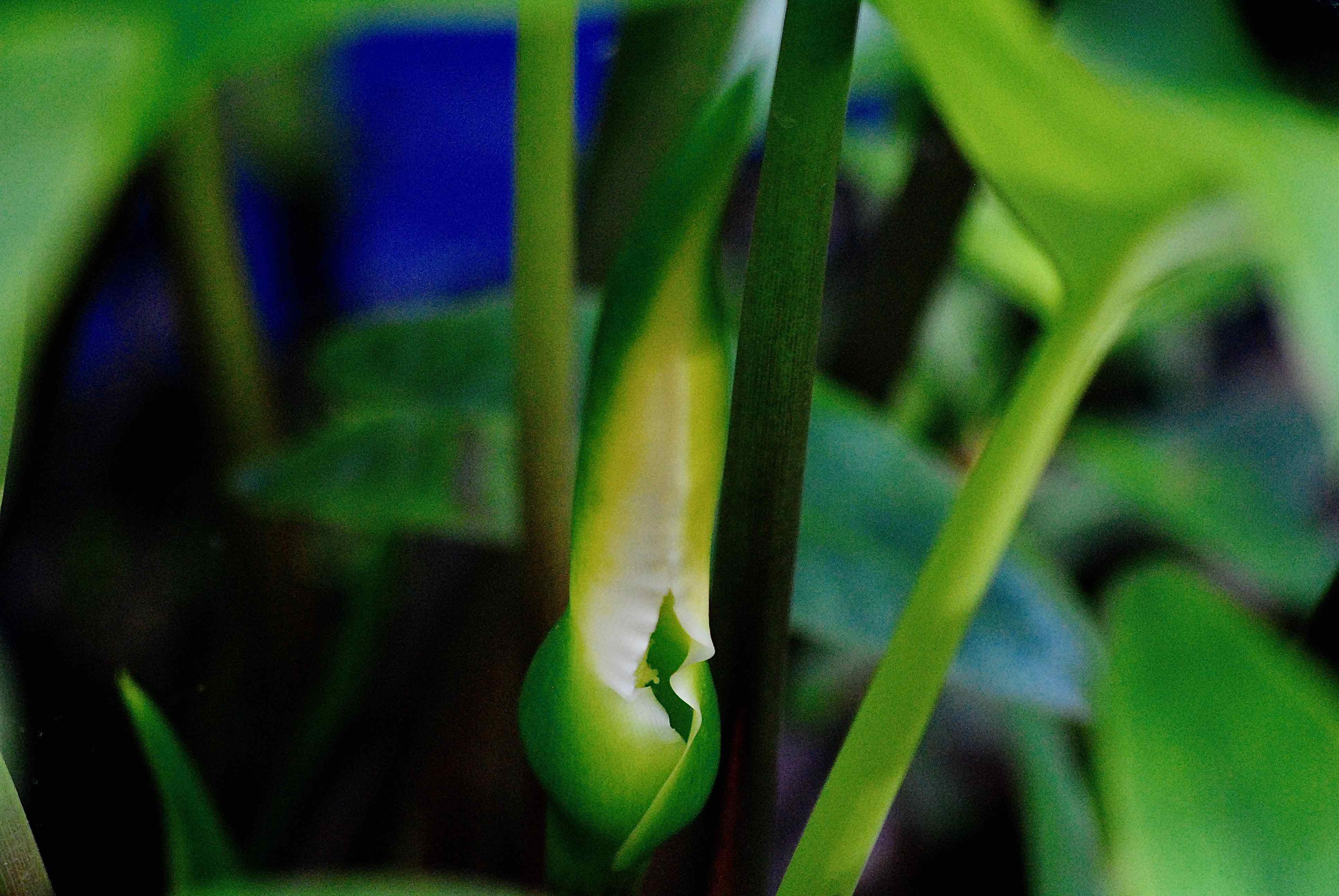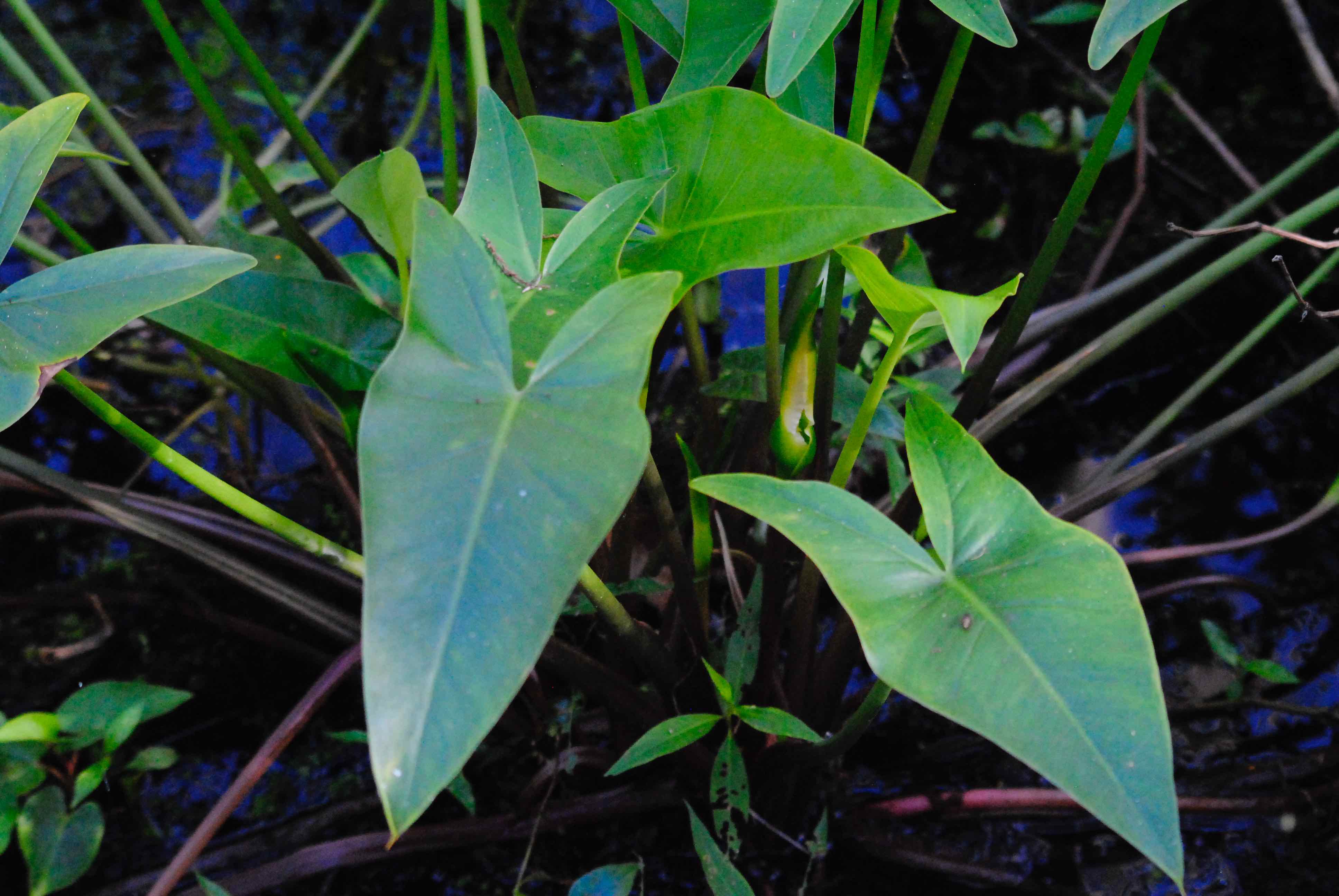
Green arum, photographed at Arthur R. Marshall Loxahatchee National Wildlife Refuge, Boynton Beach, Palm Beach County, in January 2015..
Green arum, Peltandra virginica, has a certain tropical look to it, but tropical it's not. It actually grows as far north as Quebec province in Canada and Minnesota in the U.S.
It's found throughout most of Florida, both in the Panhandle and the Peninsula, growing in swamps, marshes and along the edges of ponds. It's native range extends into the Midwest to Texas and to California and Oregon. There is some dispute whether it's native that far west. It's considered rare here in South Florida, and is listed as endangered in Iowa, but it's common elsewhere in its range.
Green arum grows a couple of feet tall in as much as a foot of water, with leaves on long stems radiating from its base. The leaves are arrow shaped, the source of some of its other common names. The flowers are white and tiny, and grow on unusual looking spikes (seen in the photos above and below). The flowers are fertilized by the chloropid fly (Elachiptera formosa), which is attracted to plant by the scent it puts out. Adults eat the pollen, mate there and females lay their eggs there. The chloropid fly spends the larval stage of its life eating away at decaying flower parts.
In turn, the flowers produce a red berry that birds, including some ducks and rails, and other wildlife will eat, helping to disperse the seeds. Any fruit not eaten washes away to begin life at another spot.
From the standpoint of us humans, it's the root of this plant that's important. The Seminoles used it for food; the Nanticoke grated the root to produce a "milk," which they fed to babies.
One other common name for green arum is tuckahoe, which, according to the Lady Bird Johnson Wildflower Center, stems from the Algonquin word for the plant. Another source says tuckahoe means "root that's good to eat." The village of Tuckahoe, N.Y., (where the '70s sitcom Maude was set), sits near a place where green arum grew in abundance.
While the root might be "good to eat," it also must be prepared properly. The roots, leaves and fruit of green arum are full of calcium oxalate, which can cause stomach irritation and even kidney failure if eaten in sufficient quantities (hard to do, we understand, because of the burning sensation that happens when you bite into it). It needs to be cooked, heated or dried to remove the toxin. What's left is full of starch, and can be ground into flour for bread or used in soups.
Green arum is a member of Araceae, the arum family. Other names include arrow arum and green arrow arum.



